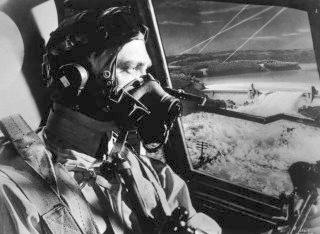************************************************************** EDITOR’s RECOMMENDATION June 2002 **************************************************************
DVD Film:

The Dam Busters – The Dam Busters March by Eric COATES with additional music by Leighton LUCAS
Starring Richard Todd as Wing Commander Guy Gibson and Michael Redgrave as Barnes Wallis
directed by Michael Anderson
WARNER BROS Home Video (b/w) D038086 [119 minutes]

The Dam Busters is one of the classics of British cinema, and I can happily report that it still holds up as a great film today. For anyone who doesn't know, the film recounts in dramatised documentary form an accurate account of a real life action by the RAF in 1943. There are a few liberties taken with the events, but they are minor, certainly compared to the wholesale historical contortions which regularly pour from Hollywood.
The story is simple. There are three dams which contain water vital to the German armament industry - 100 tons of water being required to manufacture one ton of steel. The location, construction and defences around the dams make them indestructible by conventional attack, until Dr Barnes Wallis hits upon the idea of a "bouncing bomb" which, dropped at the right height and speed above the reservoirs behind the dams will skip like a stone, sink at the base of the dam and explode in a way which will cause an irresistible shockwave.
The first part of the film follows Wallis' efforts to overcome the technical problems inherent in devising the new weapon, as well as the bigger battle of circumventing resistance to the new idea by officialdom. Wallis is played by the excellent Michael Redgrave, and what sounds potentially dull is made gripping by Michael Anderson's well paced direction and R.C. Sherriff's economical screenplay, as well as Erwin Hillier's superb monochrome cinematography. Intertwined with Wallis' story is that of RAF Wing Commander Guy Gibson, a never bettered performance by Richard Todd, as the officer chosen to form 617 Squadron and carry through the attacks. These attacks themselves comprise the last third of the film, and though some of the special effects now look very poor - and were far from state of the art even when the film was new - the result is tense and thrilling drama in the extreme. The aftermath in which Wallis learns that 56 men have not returned home, followed by shots of the men's empty rooms, the silence broken only by the ticking of a clock, is almost too much to bear. Gibson's final comment, "I have some letters to write," says much about the price of heroism without resort to histrionics.
But we are here for the music. Everyone knows "The Dam Busters March" by Eric Coates, so it may come as a surprise to find the score credited to Leighton Lucas, with Coates being credited just for the march. However, in keeping with the pseudo-documentary sensibility there is very little music in the film and Lucas' (a classical composer who scored a handful of movies, including that other British war classic, Ice Cold in Alex (1958)) music amounts to two or three brief sections of generic, barely noticeable incidental underscore. Coates theme appears five times, first over the main titles in the immensely stirring big march version. From the beginning it is clear this is one of the all time great themes, deeply melodic, uplifting, heroic, with a light hearted central section yet filled with a noble dignity of almost Elgarian proportions. It must have been an astonishing experience to hear this for the first time in a crowded cinema in 1954. The theme doesn't appear again for an hour, until half way through. Then it is used to indicate the beginning of the second act, the pace moving up a gear as the men of 617 Squadron walk to the lecture hall for their operation briefing. The next statement is soon after, as the men wait to board their planes, starting quietly as a funeral dirge - Gibson's beloved dog, Nigger, has been killed by hit and run driver that afternoon - anticipating that some of the men will not be coming home, building to a heroic peak as the planes prepare to lift off. The theme returns again as a victory salute accompanying a montage of the destruction caused by the raid. Finally, over the end titles the melody becomes a valedictory anthem. A masterclass in the use of a most malleable great theme, proving that in film music sometimes less is more.
Younger fans who might be tempted to think The Dam Busters is just a boring old black and white film may be interested to know George Lucas openly acknowledges the final raid sequences inspired the finale of Star Wars, while Coates theme leaves John Williams' Star Wars main title at the starting post as far as heroic grandeur is concerned. There may not be much of it, but film scores don't get any more effective than this.
As for the DVD. It contains only the film, transferred in Academy 4:3 - which being made in 1954 is presumably the original ratio - and a wonderfully emotive old-school trailer. The print shows a little damage but is in generally excellent condition and the transfer is first class. It's a shame some more extras have not been included, such as the 1990's Timewatch documentary on the mission, but this is nevertheless a most worthwhile purchase for the film alone.
One final note: happily this DVD contains the real film, not the travesty recently shown on ITV cut and dubbed by employees of the Ministry of Truth who prefer to rewrite the past rather than risk offending misguided politically correct sensibilities.
Gary S. Dalkin

Return to Index